- Home
- Richard Dawkins
The Blind Watchmaker Page 41
The Blind Watchmaker Read online
Page 41
We have already briefly met the neutralist theory. The idea, you will remember, is that different versions of the same molecule, for instance versions of the haemoglobin molecule differing in their precise amino-acid sequences, are exactly as good as each other. This means that mutations from one alternative version of haemoglobin to another are neutral as far as natural selection is concerned. Neutralists believe that the vast majority of evolutionary changes, at the level of molecular genetics, are neutral — random with respect to natural selection. The alternative school of geneticists, called selectionists, believe that natural selection is a potent force even at the level of detail at every point along molecular chains.
It is important to distinguish two distinct questions. First is the question that is relevant to this chapter, whether neutralism is an alternative to natural selection as an explanation for adaptative evolution. Second, and quite distinct, is the question whether most of the evolutionary change that actually occurs is adaptive. Given that we are talking about an evolutionary change from one form of a molecule to another, how likely is it that the change came about through natural selection, and how likely is it that it is a neutral change which came about through random drift? Over this second question, a ding-dong battle has raged among molecular geneticists, first one side gaining the upper hand, then the other. But if we happen to be focusing our interest on adaptation — the first question — it is all a storm in a teacup. As far as we are then concerned, a neutral mutation might as well not exist because neither we, nor natural selection, can see it. A neutral mutation isn’t a mutation at all, when we are thinking about legs and arms and wings and eyes and behaviour! To use the recipe analogy again, the dish will taste the same even if some words of the recipe have ‘mutated’ to a different print font. As far as those of us who are interested in the final dish are concerned, it is still the same recipe, whether printed like this or like this or like this. Molecular geneticists are like pernickety printers. They care about the actual form of the words in which recipes are written down. Natural selection doesn’t care, and nor should we when we are talking about the evolution of adaptation. When we are concerned with other aspects of evolution, for instance rates of evolution in different lineages, neutral mutations will be of surpassing interest.
Even the most ardent neutralist is quite happy to agree that natural selection is responsible for all adaptation. All he is saying is that most evolutionary change is not adaptation. He may well be right, although one school of geneticists would not agree. From the sidelines, my own hope is that the neutralists will win, because this will make it so much easier to work out evolutionary relationships and rates of evolution. Everybody on both sides agrees that neutral evolution cannot lead to adaptive improvement, for the simple reason that neutral evolution is, by definition, random; and adaptive improvement is, by definition, non-random. Once again, we have failed to find any alternative to Darwinian selection, as an explanation for the feature of life that distinguishes it from non-life, namely adaptive complexity.
We now come to another historical rival to Darwinism — the theory of ‘mutationism’. It is hard for us to comprehend now but, in the early years of this century when the phenomenon of mutation was first named, it was regarded not as a necessary part of Darwinian theory but as an alternative theory of evolution! There was a school of geneticists called the mutationists, which included such famous names as Hugo de Vries and William Bateson among the early rediscoverers of Mendel’s principles of heredity, Wilhelm Johannsen the inventor of the word gene, and Thomas Hunt Morgan the father of the chromosome theory of heredity. De Vries in particular was impressed by the magnitude of the change that mutation can wreak, and he thought that new species always originated from single major mutations. He and Johannsen believed that most variation within species was non-genetic. All the mutationists believed that selection had at best a minor weeding-out role to play in evolution. The really creative force was mutation itself. Mendelian genetics was thought of, not as the central plank of Darwinism that it is today, but as antithetical to Darwinism.
It is extremely hard for the modern mind to respond to this idea with anything but mirth, but we must beware of repeating the patronizing tone of Bateson himself: ‘We go to Darwin for his incomparable collection of fact (but …) for us he speaks no more with philosophical authority. We read his scheme of Evolution as we would those of Lucretius or Lamarck.’ And again, ‘the transformation of masses of populations by imperceptible steps guided by selection is, as most of us now see, so inapplicable to the fact that we can only marvel both at the want of penetration displayed by the advocates of such a proposition, and at the forensic skill by which it was made to appear acceptable even for a time.’ It was above all R. A. Fisher who turned the tables and showed that, far from being antithetical to Darwinism, Mendelian particulate heredity was actually essential to it.
Mutation is necessary for evolution, but how could anybody ever have thought it was sufficient? Evolutionary change is, to a far greater extent than chance alone would expect, improvement. The problem with mutation as the sole evolutionary force is simply stated: how on earth is mutation supposed to ‘know’ what will be good for the animal and what will not? Of all possible changes that might occur to an existing complex mechanism like an organ, the vast majority will make it worse. Only a tiny minority of changes will make it better. Anybody who wants to argue that mutation, without selection, is the driving force of evolution, must explain how it comes about that mutations tend to be for the better. By what mysterious, built-in wisdom does the body choose to mutate in the direction of getting better, rather than getting worse? You will observe that this is really the same question, in another guise, as we posed for Lamarckism. The mutationists, needless to say, never answered it. The odd thing is that the question hardly seems to have occurred to them.
Nowadays, and unfairly, this seems all the more absurd to us because we are brought up to believe that mutations are ‘random’. If mutations are random, then, by definition, they cannot be biased towards improvement. But the mutationist school did not, of course, regard mutations as random. They thought that the body had a built-in tendency to change in certain directions rather than others, though they left open the question of how the body ‘knew’ what changes would be good for it in the future. While we write this off as mystical nonsense, it is important for us to be clear exactly what we mean when we say that mutation is random. There is randomness and randomness, and many people confuse different meanings of the word. There are, in truth, many respects in which mutation is not random. All I would insist on is that these respects do not include anything equivalent to anticipation of what would make life better for the animal. And something equivalent to anticipation would indeed be needed if mutation, without selection, were to be used to explain evolution. It is instructive to look a little further at the senses in which mutation is, and is not, random.
The first respect in which mutation is non-random is this. Mutations are caused by definite physical events; they don’t just spontaneously happen. They are induced by so-called ‘mutagens’ (dangerous because they often start cancers): X-rays, cosmic rays, radioactive substances, various chemicals, and even other genes called ‘mutator genes’. Second, not all genes in any species are equally likely to mutate. Every locus on the chromosomes has its own characteristic mutation rate. For instance, the rate at which mutation creates the gene for the disease Huntington’s chorea (similar to St Vitus’s Dance), which kills people in early middle age, is about 1 in 200,000. The corresponding rate for achondroplasia (the familiar dwarf syndrome, characteristic of basset hounds and dachsunds, in which the arms and legs are too short for the body) is about 10 times as high. These rates are measured under normal conditions. If mutagens like X-rays are present, all normal mutation rates are boosted. Some parts of the chromosome are so-called ‘hot spots’ with a high turnover of genes, a locally very high mutation rate.
Third, at each locus on the c
hromosomes, whether it is a hot spot or not, mutations in certain directions can be more likely than mutations in the reverse direction. This gives rise to the phenomenon known as ‘mutation pressure’ which can have evolutionary consequences. Even if, for instance, two forms of the haemoglobin molecule, Form 1 and Form 2, are selectively neutral in the sense that both are equally good at carrying oxygen in the blood, it could still be that mutations from 1 to 2 are commoner than reverse mutations from 2 to 1. In this case, mutation pressure will tend to make Form 2 commoner than Form 1. Mutation pressure is said to be zero at a given chromosomal locus, if the forward mutation rate at that locus is exactly balanced by the backward mutation rate.
We can now see that the question of whether mutation is really random is not a trivial question. Its answer depends on what we understand random to mean. If you take ‘random mutation’ to mean that mutations are not influenced by external events, then X-rays disprove the contention that mutation is random. If you think ‘random mutation’ implies that all genes are equally likely to mutate, then hot spots show that mutation is not random. If you think ‘random mutation’ implies that at all chromosomal loci the mutation pressure is zero, then once again mutation is not random. It is only if you define ‘random’ as meaning ‘no general bias towards bodily improvement’ that mutation is truly random. All three of the kinds of real non-randomness we have considered are powerless to move evolution in the direction of adaptive improvement as opposed to any other (functionally) ‘random’ direction. There is a fourth kind of non-randomness, of which this is also true but slightly less obviously so. It will be necessary to spend a little time on this because it is still muddling even some modern biologists.
There are people for whom ‘random’ would have the following meaning, in my opinion a rather bizarre meaning. I quote from two opponents (P. Saunders and M-W. Ho) of Darwinism, on their conception of what Darwinians believe about ‘random mutation’: ‘The neo-Darwinian concept of random variation carries with it the major fallacy that everything conceivable is possible’. ‘All changes are held to be possible and all equally likely’ (my emphasis). Far from holding this belief, I don’t see how you would begin to set about making such a belief even meaningful! What could it possibly mean to hold that ‘all’ changes are equally likely? All changes? In order for two or more things to be ‘equally likely’, it is necessary that those things should be definable as discrete events. For instance, we can say ‘Heads and Tails are equally likely’, because Heads and Tails are two discrete events. But ‘all possible’ changes to an animal’s body are not discrete events of this type. Take the two possible events: ‘Cow’s tail lengthens by one inch’; and ‘Cow’s tail lengthens by two inches’. Are these two separate events, and therefore ‘equally likely’? Or are they just quantitative variants of the same event?
It is clear that a kind of caricature of a Darwinian has been set up, whose notion of randomness is an absurd, if not actually meaningless, extreme. It took me a while to understand this caricature, for it was so foreign to the way of thinking of the Darwinians that I know. But I think I do now understand it, and I shall try to explain it, as I think it helps us to understand what lies behind quite a lot of alleged opposition to Darwinism.
Variation and selection work together to produce evolution. The Darwinian says that variation is random in the sense that it is not directed towards improvement, and that the tendency towards improvement in evolution comes from selection. We can imagine a kind of continuum of evolutionary doctrines, with Darwinism at one end and Mutationism at the other. The extreme mutationist believes that selection plays no role in evolution. The direction of evolution is determined by the direction of the mutations that are offered. For instance, suppose we take the enlargement of the human brain that has occurred during the last few million years of our evolution. The Darwinian says that the variation that was offered up by mutation for selection included some individuals with smaller brains and some individuals with larger brains; selection favoured the latter. The mutationist says that there was a bias in favour of larger brains in the variation that was offered up by mutation; there was no selection (or no need for selection) after variation was offered up; brains got bigger because mutational change was biased in the direction of bigger brains. To summarize the point: in evolution there was a bias in favour of larger brains; this bias could have come from selection alone (the Darwinian view) or from mutation alone (the mutationist view); we can imagine a continuum between these two points of view, almost a kind of trade-off between the two possible sources of evolutionary bias. A middle view would be that there was some bias in mutations towards enlargement of the brain, and that selection increased the bias in the population that survived.
The element of caricature comes in the portrayal of what the Darwinian means when he says that there is no bias in the mutational variation that is offered up for selection. To me, as a real-life Darwinian, it means only that mutation is not systematically biased in the direction of adaptive improvement. But to the larger-than-life caricature of a Darwinian, it means that all conceivable changes are ‘equally likely’. Setting aside the logical impossibility of such a belief, already noted, the caricature of a Darwinian is thought to believe that the body is infinitely malleable clay, ready to be shaped by allpowerful selection into any form that selection might favour. It is important to understand the difference between the real-life Darwinian and the caricature. We shall do so in terms of a particular example, the difference between the flight techniques of bats and of angels.
Angels are always portrayed as having wings sprouting from their backs, leaving their arms unencumbered by feathers. Bats, on the other hand, along with birds and pterodactyls, have no independent arms. Their ancestral arms have become incorporated into wings, and cannot be used, or can only be used very clumsily, for other purposes such as picking up food. We shall now listen in on a conversation between a real-life Darwinian and an extreme caricature of a Darwinian.
Real-life.
I wonder why bats didn’t evolve wings like angels. You’d think that they could use a free pair of arms. Mice use their arms all the time for picking up food and nibbling it, and bats look terribly clumsy on the ground without arms. I suppose one answer might be that mutation never provided the necessary variation. There just never were any mutant ancestral bats that had wing buds sticking out of the middle of their backs.
Caricature.
Nonsense. Selection is everything. If bats haven’t got wings like angels, this can only mean that selection didn’t favour wings like angels. There certainly were mutant bats with wing buds sticking out of the middle of their backs, but selection just didn’t favour them.
Real-life.
Well, I quite agree that selection might not have favoured them if they had sprouted. For one thing they would have increased the weight of the whole animal, and surplus weight is a luxury no aircraft can afford. But surely you don’t think that, whatever selection might in principle favour, mutation will always come up with the necessary variation?
Caricature.
Certainly I do. Selection is everything. Mutation is random.
Real-life.
Well yes, mutation is random, but this only means that it can’t see into the future and plan what would be good for the animal. It doesn’t mean that absolutely anything is possible. Why do you think that no animal breathes fire out of its nostrils like a dragon, for instance? Wouldn’t it be useful for catching and cooking prey?
Caricature.
That’s easy. Selection is everything. Animals don’t breathe fire, because it wouldn’t pay them to do so. Fire-breathing mutants were eliminated by natural selection, perhaps because making fire was too costly in energy.
Real-life.
I don’t believe there ever were fire-breathing mutants. And if there had been, presumably they would have been in grave danger of burning themselves!
Caricature.
Nonsense. If that was the only probl
em, selection would have favoured the evolution of asbestos-lined nostrils.
Real-life.
I don’t believe any mutation ever produced asbestoslined nostrils. I don’t believe mutant animals could secrete asbestos, any more than mutant cows could jump over the moon.
Caricature.
Any moon-jumping mutant cow would promptly be eliminated by natural selection. There’s no oxygen up there you know.
Real-life.
I’m surprised you don’t postulate mutant cows with genetically determined space-suits and oxygen masks.
Caricature.
Good point! Well, I suppose the real explanation must be that it just wouldn’t pay cows to jump over the moon. And we mustn’t forget the energetic cost of reaching escape velocity.
Real-life.
This is absurd.
Caricature.
You are obviously not a true Darwinian. What are you, some kind of crypto-mutationist deviationist?
Real-life.
If you think that, you should meet a real mutationist.
Mutationist.
Is this a Darwinian in-group argument, or can anyone join in? The trouble with both of you is that you give far too much prominence to selection. All that selection can do is weed out gross deformities and freaks. It can’t produce really constructive evolution. Go back to the evolution of bat wings. What really happened is that in an ancient population of ground-dwelling animals, mutations started turning up with elongated fingers and webs of skin between. As the generations went by, these mutations became more and more frequent until, eventually, the whole population had wings. It had nothing to do with selection. There was just this built-in tendency in the ancestral bat constitution to evolve wings.

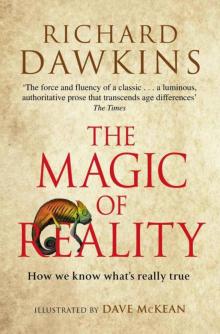 The Magic of Reality
The Magic of Reality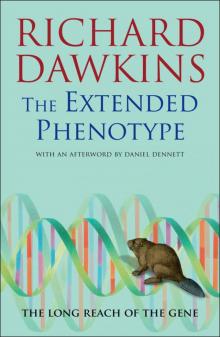 The Extended Phenotype
The Extended Phenotype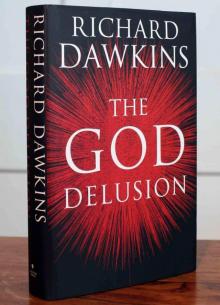 The God Delusion
The God Delusion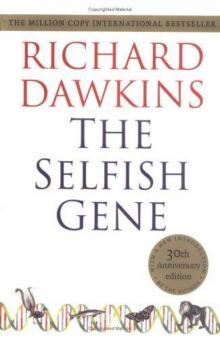 The Selfish Gene
The Selfish Gene The Blind Watchmaker
The Blind Watchmaker The Greatest Show on Earth
The Greatest Show on Earth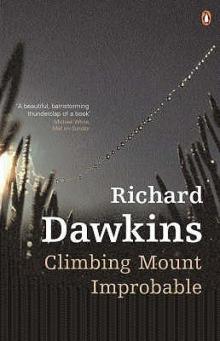 Climbing Mount Improbable
Climbing Mount Improbable Outgrowing God
Outgrowing God Brief Candle in the Dark
Brief Candle in the Dark The Greatest Show on Earth: The Evidence for Evolution
The Greatest Show on Earth: The Evidence for Evolution Science in the Soul
Science in the Soul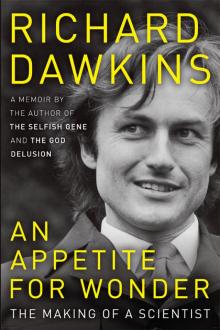 An Appetite for Wonder
An Appetite for Wonder